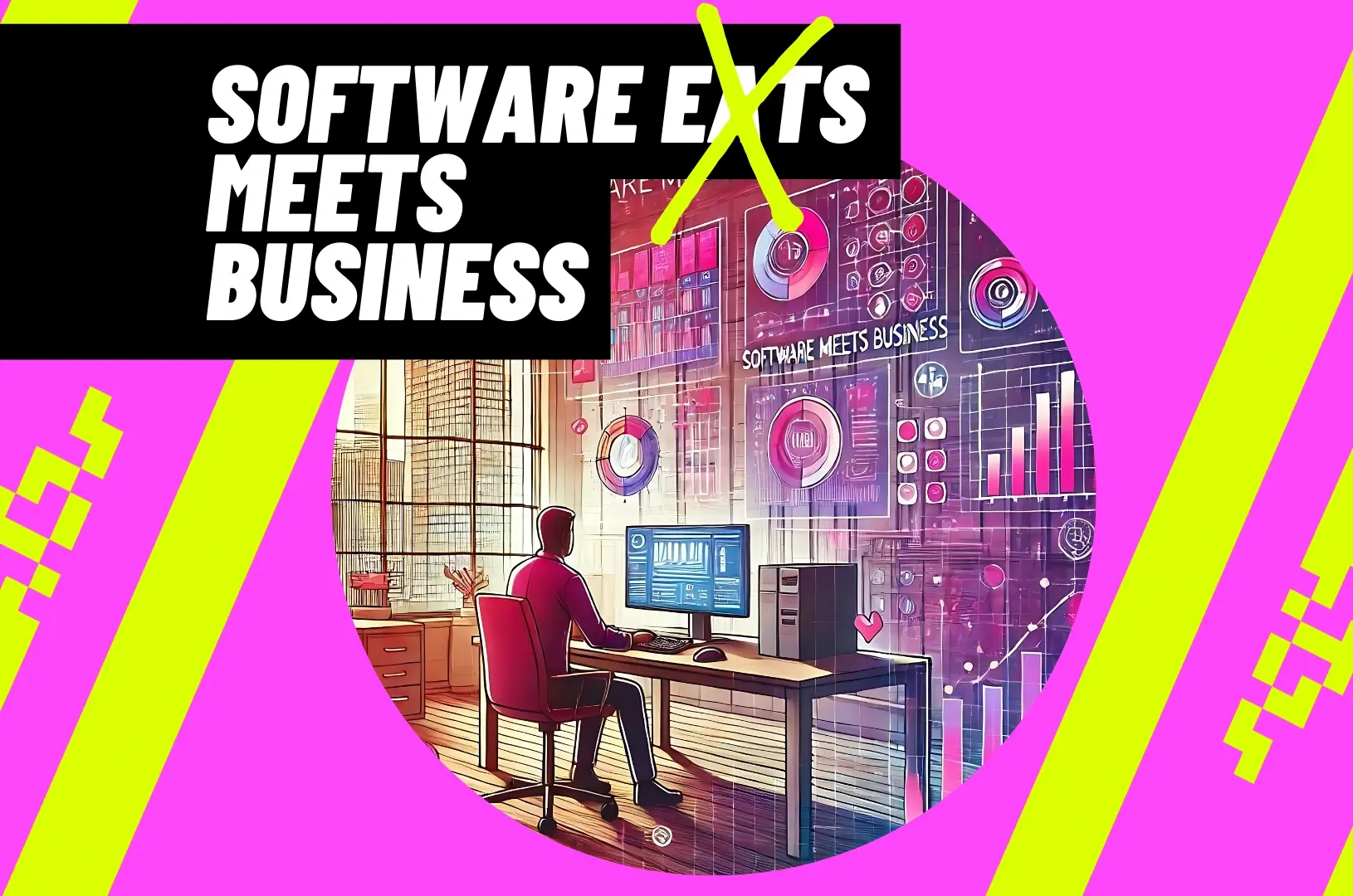
Hiring Top Developers and Building a Developer Community with Berco Beute - E5
Berco shares his journey, his passion for improving software systems, and how AI is revolutionising the way businesses and developers collaborate.
In this engaging episode of Software Meets Business, host Richard Bundock welcomes Berco Beute, the CEO and founder of Stekz, for an insightful conversation. Together, they explore the intersection of business and software development, discussing innovative approaches to bridging the gap between business needs and technological implementation.
Rich: Welcome to another episode of Software Meets Business. I’m thrilled to have Berco Beute, the CEO and founder of Stex, joining us today. Welcome, Berco!
Berco: Thanks for having me.
[00:00:34]
Rich: To get us started, can you tell us about your journey to founding Stex?
Berco: Sure. I studied communication science in Nijmegen, Netherlands, in the early 90s. It focused on how mass media, like TV and radio, impacted audiences. But I was fascinated by the emerging new media—early electronic networks and the internet. After completing my studies, I realized I lacked the technical skills to fully understand this new medium. So I pursued a master’s in artificial intelligence, which was still in its early days. I joined one of the first AI programs in Groningen. Funny enough, I spent 25 years explaining AI to people, and now they’re explaining it to me! Later, I completed my PhD in Copenhagen, Denmark, researching distributed multimedia. From there, I worked on cutting-edge IT projects, including early concepts for smart devices, before smartphones existed. About four years ago, I founded Stex to address a critical issue: bad software leads to bad consequences. Twenty years ago, no one wanted to hear that message. But now, with systems controlling everything from traffic lights to homes, the risks are real.
[00:03:00]
Rich: How does Stex address the gap between businesses and developers?
Berco: There’s a massive gap between the people who have the intent—the business owners—and those who build the systems to fulfill that intent. It’s like speaking two different languages. AI, as it’s evolved, can act as a compiler of sorts, bridging the gap between natural language (business intent) and technical generation (coding). But even with tools like AI, the key is getting everyone—business and developers—on the same page. At Stex, we focus on creating shared context. This means starting from the business goals, mapping processes, and defining domains like in domain-driven design. Everyone works in one environment, looking at the same processes, domains, and key data elements.
[00:07:09]
Rich: How do you align your team to deliver on your vision?
Berco: We follow a “business-first” approach. Everything begins with the business goals—what are the ambitions and challenges? This creates a digital backbone for the organization. Whether it’s a startup building from scratch or a large organization improving one process, context is king. A process doesn’t exist in isolation—it interacts with other processes, domains, and data elements. Our platform ensures everyone sees the bigger picture, making collaboration smoother.
[00:12:01]
Rich: Once the context is set, how do you find the right people to bring your vision to life?
Berco: Finding good developers has become increasingly challenging over the last 25 years. At Stex, we hire our own employees instead of outsourcing to third-party teams. We have remote team members globally, but they’re all directly part of our company. This ensures we maintain control over the software quality and foster a strong, cohesive team.
[00:14:09]
Rich: How do you attract top talent?
Berco: Employer branding is key. One of our most effective strategies is organizing developer conferences, such as PyGrunn (focused on Python) and AIGrunn (focused on AI). These annual, non-commercial events bring together around 400 developers. They’re affordable and feel like a community gathering. Attendees get to see our brand, meet our team, and experience our commitment to the developer community. I started PyGrunn about 15 years ago as a cost-effective way to bring experts to our team when we couldn’t afford to send employees to expensive international conferences. It’s since grown into a major event. These conferences have become our best source for attracting new talent.
[00:17:14]
Rich: When someone expresses interest in joining Stex, how do you assess their fit?
Berco: We don’t hire just anyone. Candidates must align with the specific skills needed for our projects, such as Python for backend development or React for frontend work. We don’t rely on standardized remote tests, as those can be gamed with AI assistance. Instead, we ask candidates to show us their open-source work or walk us through a recent project. We focus on their ability to explain their choices, articulate their architecture, and reflect on their mistakes. We also value humility. Confidence is great, but arrogance—especially a “know-it-all” attitude—can be a red flag. We want team players who can collaborate effectively and aren’t afraid to admit when they’re wrong.
[00:23:00]
Rich: Tell us more about PyGrunn and AIGrunn.
Berco: PyGrunn, our Python-focused conference, takes place every May, while AIGrunn, focused on AI, happens every November. These conferences are non-commercial and run at cost. They’re a way to give back to the community that’s made open-source software possible, and they also strengthen our employer brand. Organizing them is a lot of work, but it’s worth it. Attendees appreciate the family-like atmosphere, and it’s rewarding to see so many developers coming together to share knowledge.
[00:24:50]
Rich: Let’s talk about clients. What makes a great client, and what makes a challenging one?
Berco: The worst clients treat you like a supplier instead of a partner. They focus on micromanaging hours instead of trusting you to deliver value. Software development is complex, and problems often have “fuzzy boundaries.” Clients need to understand that the path to a solution isn’t always linear. The best clients are those who align with your goals and trust you to do your job. For example, our goal is to build effective, efficient software solutions. If we spend too many hours on a project, it reflects poorly on us. When goals are aligned, there’s trust, and the partnership thrives.
[00:28:07]
Rich: Thanks so much, Berco. Your insights into hiring and community building are incredibly valuable.
Berco: You’re welcome—it’s been great to share my experiences.

Contact us.
If you need a partner in software development, we're here to help you.
We will respond to your enquiry immediately.